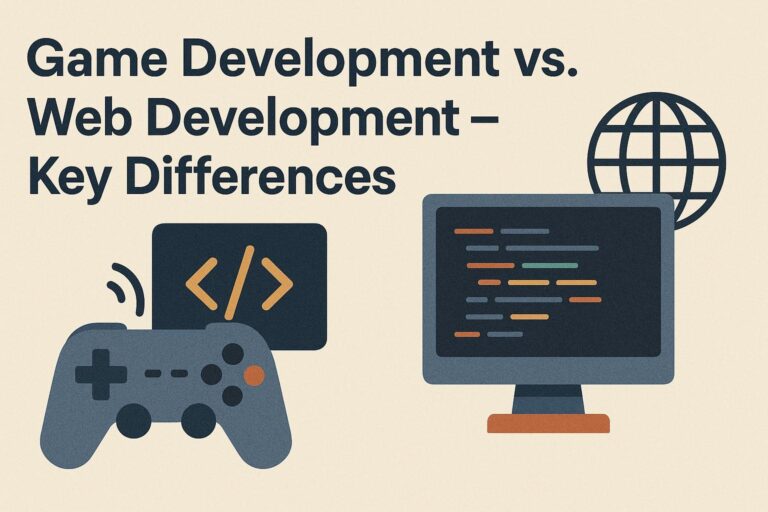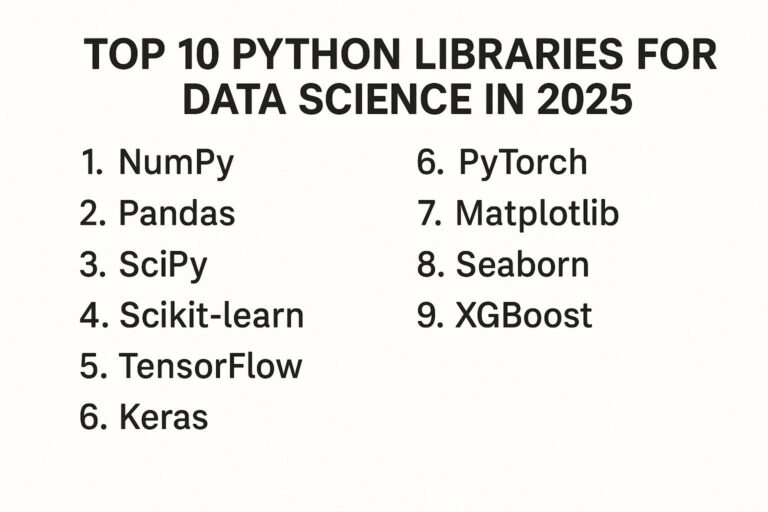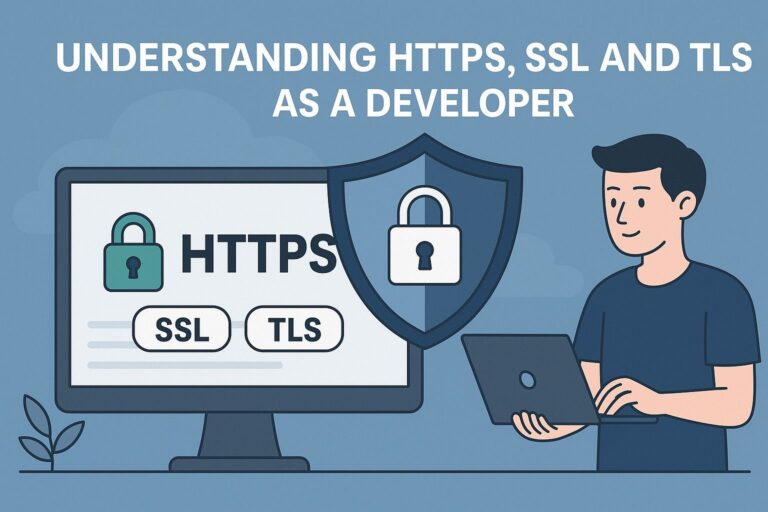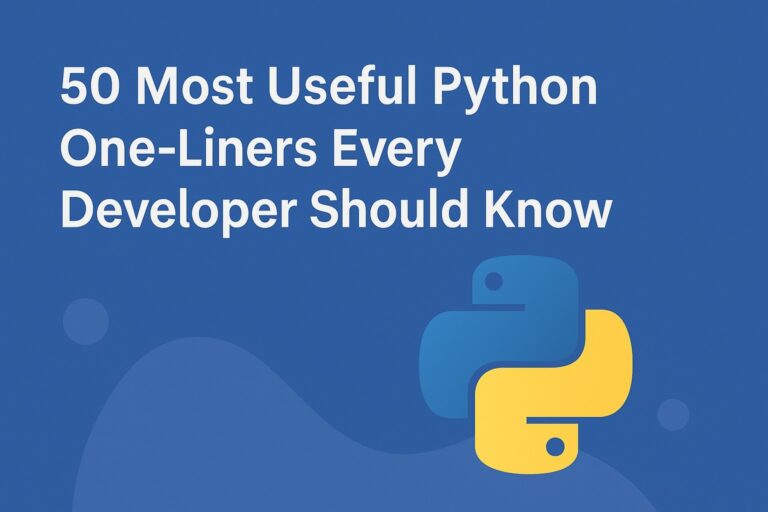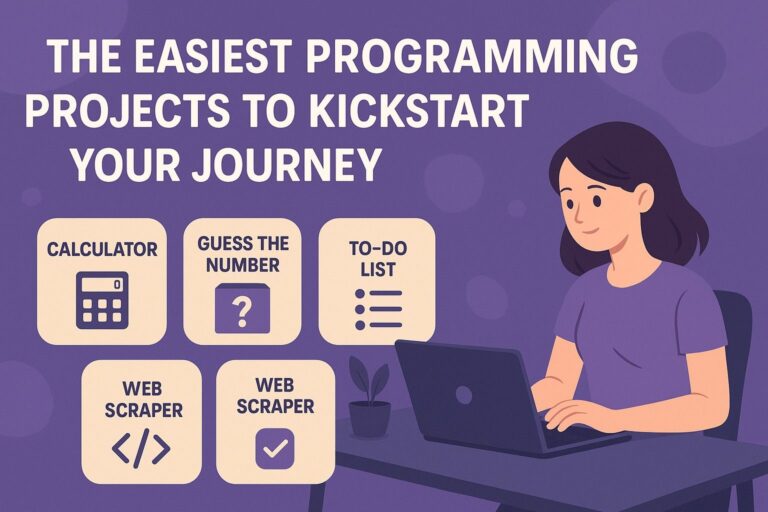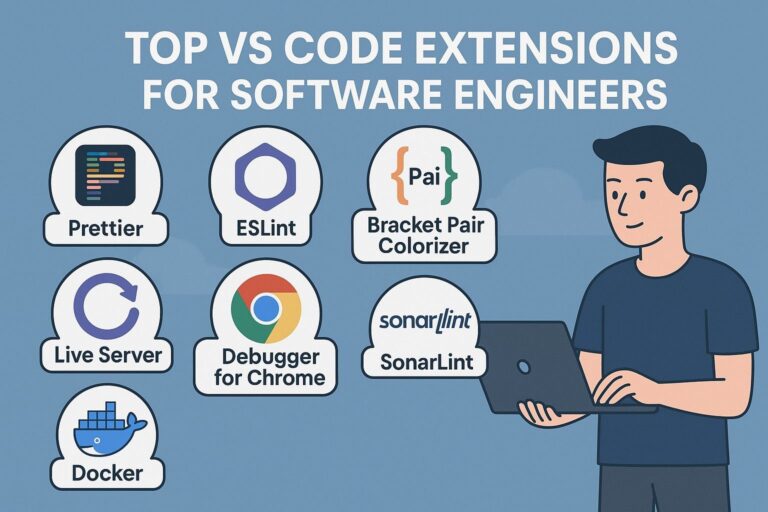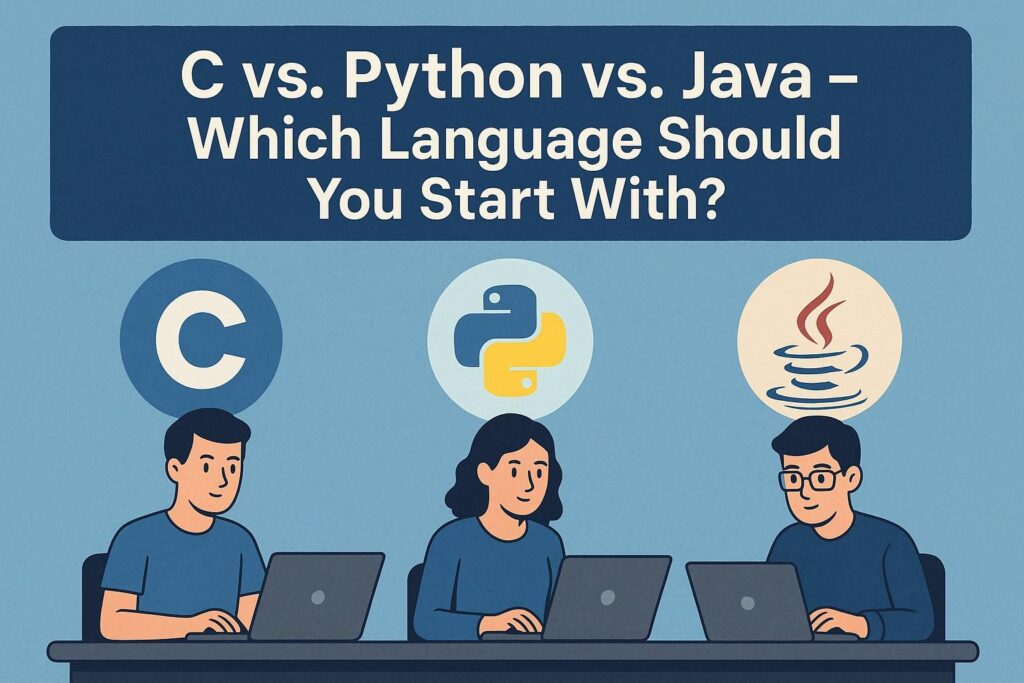
If you’re just starting your journey into the world of programming, one of the biggest decisions you’ll face early on is which language to learn first. The top contenders that often come up for beginners are C, Python, and Java.
These three languages are foundational pillars in the software world—each with its own strengths, applications, and learning philosophies. But choosing the right one depends heavily on your goals, interests, and preferred learning style.
In this article, we’ll explore the strengths, limitations, real-world applications, and learning curves of each language to help you make an informed decision.
1. Python – The Beginner-Friendly Powerhouse
Overview
Python has rapidly become the language of choice for beginners and professionals alike. Its readable syntax, wide applicability, and massive community support make it a top pick for those looking to start quickly and build real-world projects early.
Key Features
- Interpreted language with dynamic typing
- High-level and general-purpose
- Syntax resembles plain English, improving readability
- Supports multiple paradigms including object-oriented and functional programming
- Rich ecosystem with libraries for web, AI, data science, automation, and more
Best Suited For
- Beginners with no prior experience
- Those interested in data science, machine learning, web development, and automation
- Rapid prototyping and scripting tasks
- Academics and researchers who need quick development cycles
Advantages
- Simple, readable, and concise code
- Wide range of learning resources
- Extensive third-party libraries and frameworks (e.g., NumPy, Django, Flask, TensorFlow)
- Huge community and strong documentation
- Fast development cycles
Disadvantages
- Slower performance compared to compiled languages like C or Java
- Not suitable for low-level programming or system design
- Dynamic typing can lead to bugs that are caught only during runtime
- Not the best fit for mobile development or memory-constrained environments
Learning Curve
Gentle and beginner-friendly. Great for quickly understanding core programming logic, problem-solving, and algorithmic thinking.
2. Java – The Enterprise-Grade All-Rounder
Overview
Java is a statically typed, object-oriented language that has remained a staple in enterprise development for over two decades. It powers everything from Android apps to banking systems to large-scale backend platforms.
Key Features
- Compiled into bytecode and runs on the Java Virtual Machine (JVM)
- Strong object-oriented principles
- Platform-independent: write once, run anywhere
- Mature ecosystem with tools like Spring Boot, Hibernate, and Maven
- Strong community and long-term stability
Best Suited For
- Students aiming for software engineering roles
- Developers interested in Android app development
- Building enterprise-grade backend systems
- Learning object-oriented programming in depth
Advantages
- Strongly typed, reducing the risk of runtime errors
- Extremely stable and backward-compatible
- Excellent IDE support (e.g., IntelliJ IDEA, Eclipse)
- Commonly used in universities and interviews
- Performs well in high-scale production environments
Disadvantages
- Verbose syntax can be daunting to beginners
- Longer time to develop and compile projects compared to Python
- Slower startup time due to JVM
- Can feel heavy for simple or small-scale projects
Learning Curve
Moderate. While not as easy as Python, Java provides a deeper foundation in software engineering concepts like inheritance, interfaces, and exception handling.
3. C – The Foundational Low-Level Language
Overview
C is one of the oldest and most influential programming languages still widely used today. It is considered the mother of all modern programming languages, forming the base for many others, including C++, Java, and even parts of Python.
Key Features
- Compiled and statically typed
- Procedural programming paradigm
- Direct memory manipulation using pointers
- Minimal abstraction from hardware
- Typically used in system programming, operating systems, embedded software, and compilers
Best Suited For
- Students in computer science or electronics
- Those interested in systems programming, embedded development, or operating system internals
- Developers seeking deep understanding of memory and performance optimization
Advantages
- Extremely fast and efficient
- Offers full control over system resources
- Teaches core computer science principles
- Portable and lightweight
- Ideal for hardware-near applications
Disadvantages
- Manual memory management increases the chance of bugs and security issues
- Steeper learning curve
- No native object-oriented or high-level abstractions
- Harder to debug for beginners
Learning Curve
Challenging but rewarding. Learning C builds a solid technical foundation that makes learning higher-level languages significantly easier.
Comparison Table – C vs. Python vs. Java
| Feature | C | Python | Java |
| Typing System | Static | Dynamic | Static |
| Programming Paradigm | Procedural | Multi-paradigm | Object-Oriented |
| Compilation | Compiled | Interpreted | Compiled to bytecode (JVM) |
| Performance | Very High | Moderate | High |
| Memory Management | Manual | Automatic (Garbage Collected) | Automatic (Garbage Collected) |
| Syntax Complexity | Low-level, terse | Clean and beginner-friendly | Verbose and structured |
| Speed of Development | Slower | Very fast | Moderate |
| Best Use Cases | OS, Embedded, Systems | AI, Automation, Web, Scripting | Android, Backend, Enterprise |
| Learning Curve | Steep | Gentle | Moderate |
| IDE Support | Basic (e.g., Code::Blocks) | Rich (e.g., VS Code, PyCharm) | Enterprise-grade (IntelliJ, Eclipse) |
Which Language Should You Start With?
If you’re just beginning and want quick wins:
Start with Python.
It’s the easiest to get started with, has a shallow learning curve, and enables you to build real-world projects quickly. Perfect for general-purpose learning, automation, and data science.
If you’re focused on Android apps or enterprise backend roles:
Start with Java.
Though more verbose, Java equips you with a solid understanding of object-oriented programming and system architecture—skills valuable in both academia and industry.
If you’re academically inclined or want to understand how computers work:
Start with C.
C teaches you how memory, data, and the CPU interact. It’s essential for those interested in embedded systems, operating systems, or hardware programming.
Final Thoughts
There’s no universal “best” language to start with. What matters most is that you commit to one, learn the fundamentals deeply, and build real projects along the way.
Each of these languages opens different doors:
- Python for accessibility and flexibility
- Java for career-readiness and enterprise development
- C for technical depth and systems-level mastery
Eventually, as your skills grow, you’ll likely learn all three. The key is to start where your interests align, build momentum, and keep coding consistently.
Choose a language, stick to it for a while, and focus more on building your logic than chasing trends.

I’m Shreyash Mhashilkar, an IT professional who loves building user-friendly, scalable digital solutions. Outside of coding, I enjoy researching new places, learning about different cultures, and exploring how technology shapes the way we live and travel. I share my experiences and discoveries to help others explore new places, cultures, and ideas with curiosity and enthusiasm.

